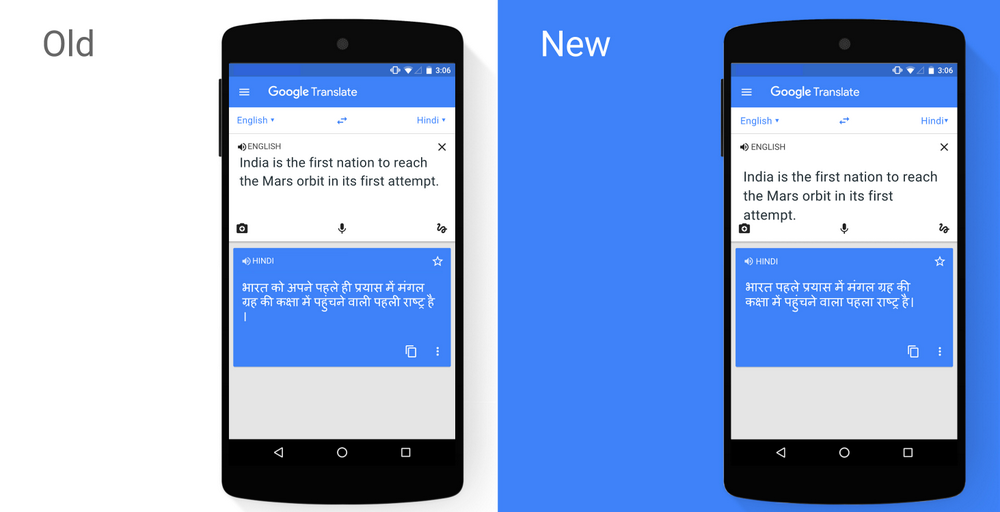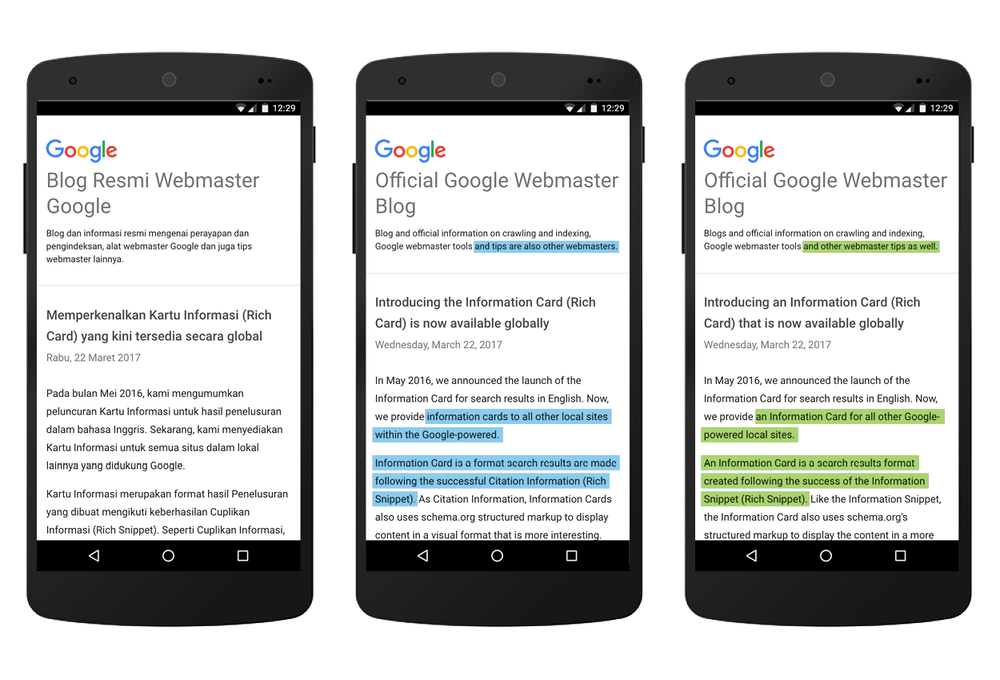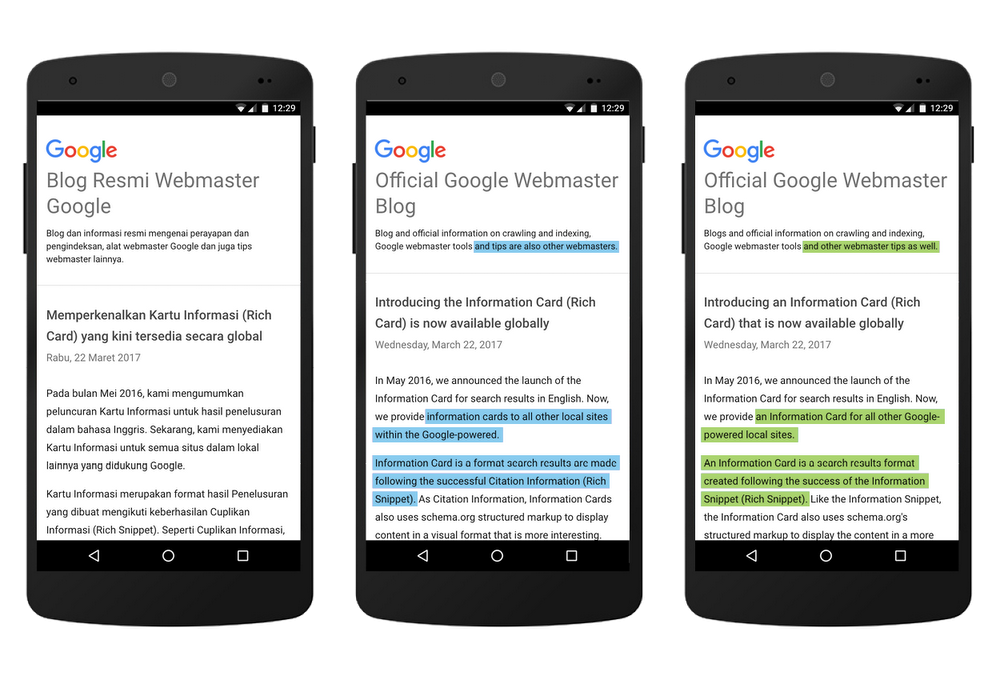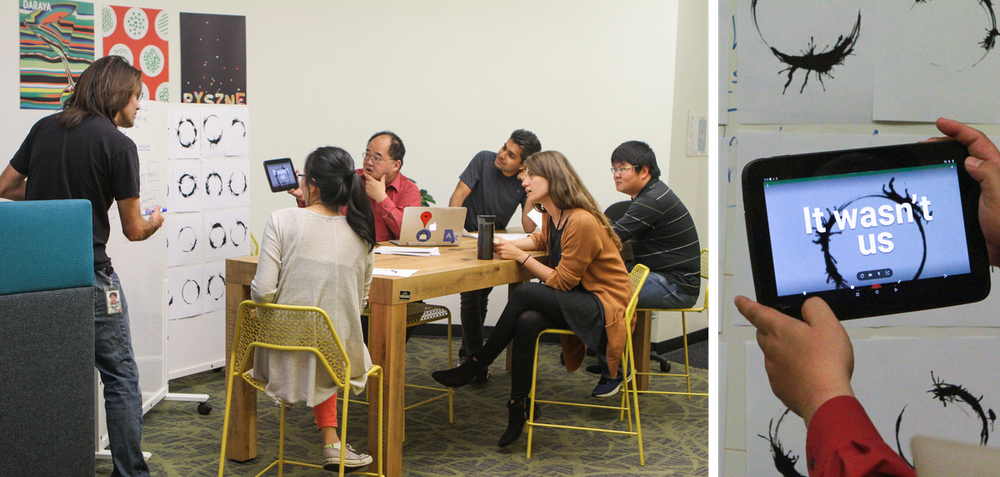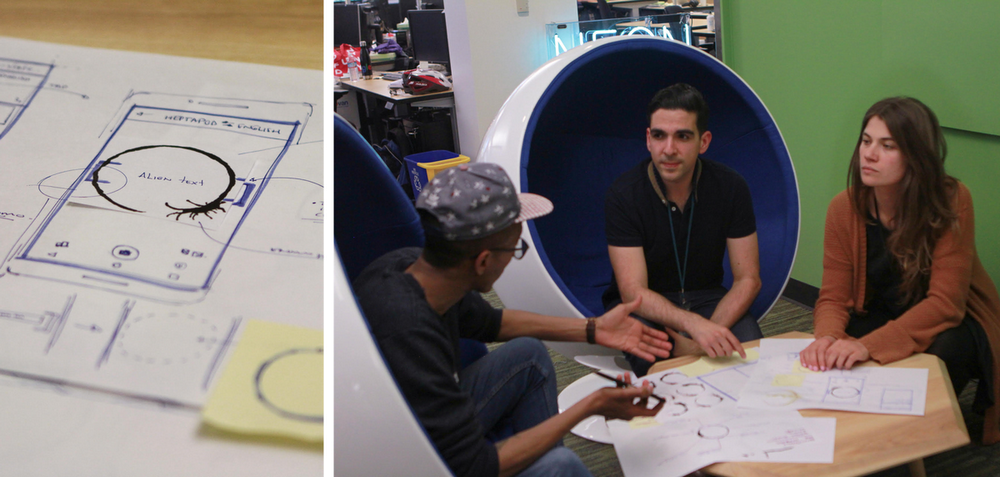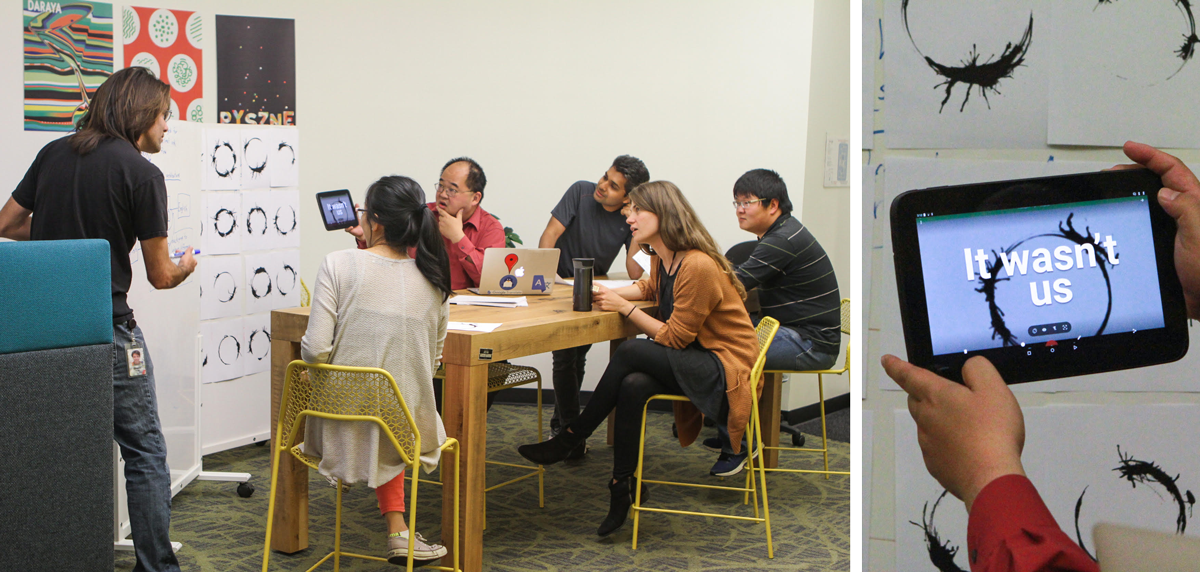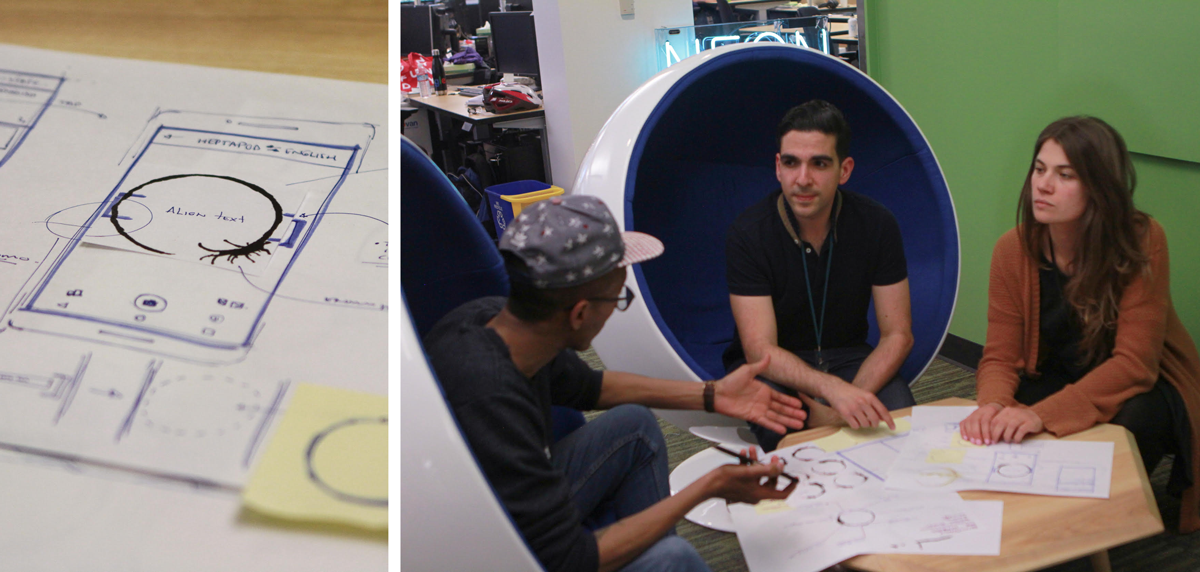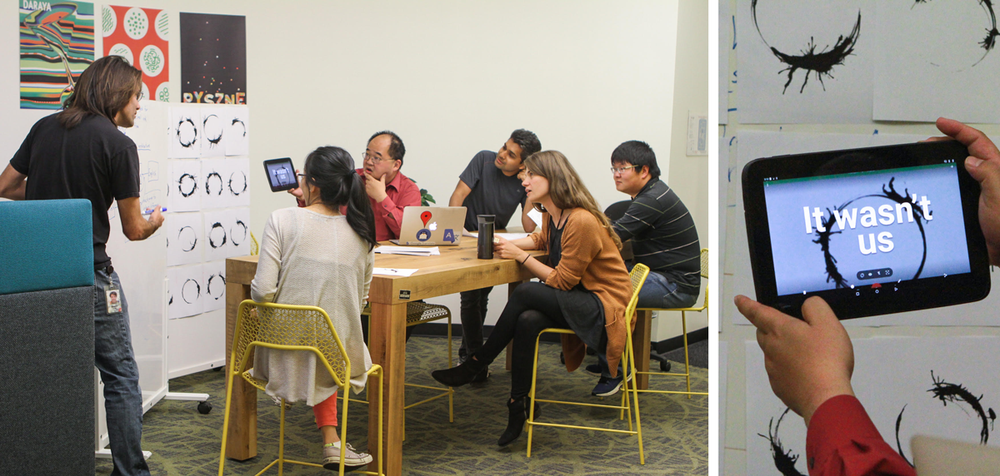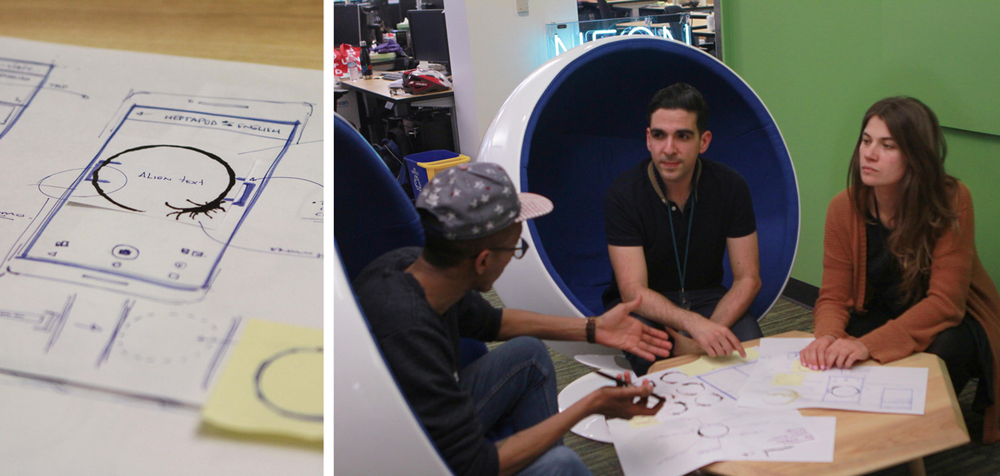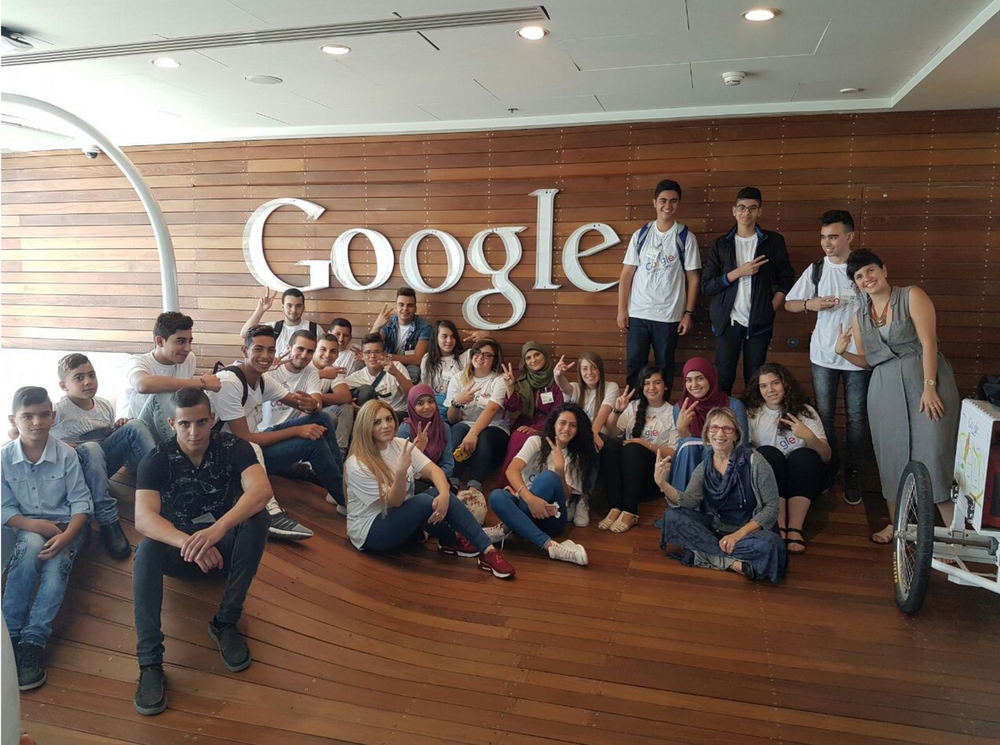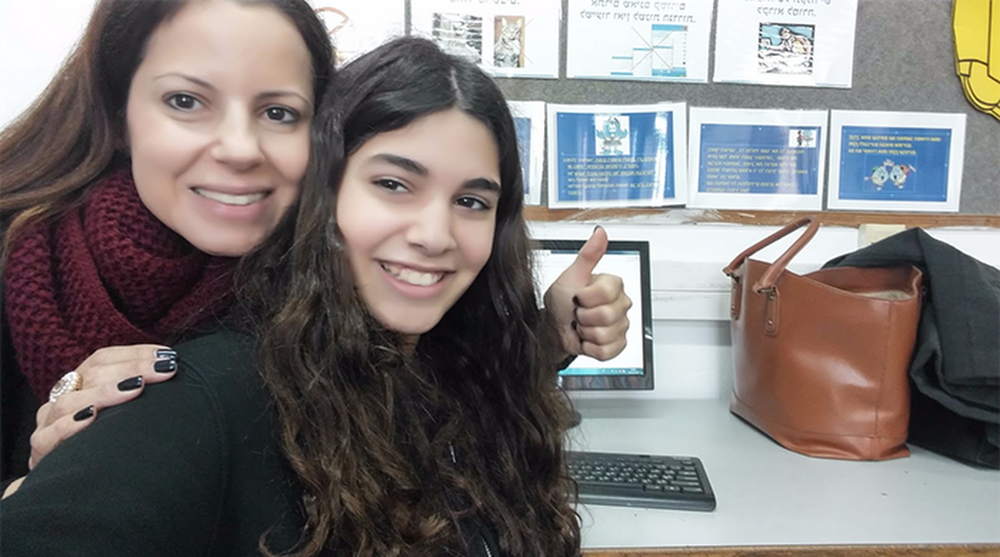There are currently over 400* million Internet users in India, but with only 20% of the population fluent in English, most Internet users have significant language barriers to getting the full value of the Internet. A speaker of Indian languages like Hindi or Tamil still has trouble finding content to read and or use services that they can use in their own languages.
To build rich and empowering experiences for everyone means first and foremost making things work in the languages people speak. Today, we’re taking a huge step forward by launching new set of products and features that will empower the Internet ecosystem to create more language content and better serve the needs of a billion Indians who’re coming online rapidly.
Neural Machine Translation: The world’s content, in your language
Starting today, when you use Google Translate, you might notice that the translation is more accurate and easier to understand, especially when translating full sentences. That’s because we’ve brought our new Neural Machine Translation technology to translations between English and nine widely used Indian languages — Hindi, Bengali, Marathi, Tamil, Telugu, Gujarati, Punjabi, Malayalam and Kannada.
Neural translation is a lot better than our old phrase-based system, translating full sentences at a time, instead of pieces of a sentence. It uses this broader context to help it figure out the most relevant translation, which it then rearranges and adjusts to be more like a human speaking with proper grammar. This new technique improves the quality of translation more in a single jump than we’ve seen in the last ten years combined.
Just like it’s easier to learn a language when you already know a related language, we’ve discovered that our neural technology speaks each language better when it learns several at a time. For example, we have a whole lot more sample data for Hindi than its relatives Marathi and Bengali, but when we train them all together, the translations for all improve more than if we’d trained each individually.
Phrase based Translation Neural Machine Translation
You can try, these out on iOS and Android Google Translate apps, at translate.google.co.in and through Google Search.
But how does this make the whole web better for everyone — Chrome has it covered!
That’s where Chrome’s built-in Translate functionality comes into play. Every day, more than 150 million web pages are translated by Chrome users through the magic of machine translations with one click or tap. The Chrome team and the Google Translate team have worked together to bring the power of Neural Machine Translation to web content, making full-page translations more accurate and easier to read.
Today, we’re extending Neural Machine Translation built into Chrome to and from English for the same nine Indian languages (Bengali, Gujarati, Kannada, Malayalam, Marathi, Punjabi, Tamil Telugu and Hindi). This means higher quality translations of everything from song lyrics to news articles to cricket discussions.
Gboard in 22 Indian Languages and more
Being able to type in your language of choice is as important as understanding content on the web. Today, we are ramping up support to include 11 new languages to the list of 11 existing Indian languages —with transliteration support—including Hindi, Bengali, Telugu, Marathi, Tamil, Urdu, and Gujarati.
Gboard has all the things you love about your Google Keyboard — speed and accuracy, Glide Typing and voice typing — plus Google Search built in. It also allows you to search and use Google Translate right in your keyboard (just tap the “G” button to get started). And—as a reminder—Gboard already has a Hinglish language option for those of you who often switch back and forth between Hindi and English.
With today’s update, we’ve also dropped in a new text editing tool that makes it easier to select, copy and paste, plus new options for resizing and repositioning the keyboard so it fits to your hand and texting style. And to top it all off, this Gboard update comes with some under-the-hood improvements including better accuracy and predictions while you type
Like Google Indic Keyboard, Gboard has auto-correction and prediction in these new languages, plus two layouts for each—one in the native language script and one with the QWERTY layout for transliteration, which lets you spell words phonetically using the QWERTY alphabet and get text output in your native language script. For example, type “aapko holi ki hardik shubhkamnay” and get “आपको होली की हार्दिक शुभकामनायें ”.
This is available today on Google Play Store, so make sure you’re running the latest version of the app.
Auto-translated local reviews in Maps
The local information across Google Search and Maps helps millions of people, every day, to discover and share great places. Our goal is to build a map tailored to each user and their likes and preferences and make it work for everyone in their local languages. Starting today, we’ll automatically add translations to local reviews on Google Maps, both on mobile and desktop. With this update, millions of these reviews – from restaurants to cafes or hotels – will appear in your own language.
All you need to do is launch Google Maps, open reviews, and they’ll appear in both the original language as well as the language you set on your device. So for instance if you speak Tamil and travel to Kolkata, and you want to see reviews of the popular restaurants in Kolkata, you can now automatically see reviews both in your own language and the original language of the review.
Hindi Dictionary in Search
When you search for the meaning of a word in English, for instance “meaning of nostalgic”, you’ll get a dictionary straight in Google Search. Today, in collaboration with the Oxford University Press, we’re bringing the Rajpal & Sons Hindi dictionary online. This new experience supports transliteration so you don’t even need to switch to a Hindi keyboard. So the next time when you’d like to know more about a word, say Nirdeshak, you can just type in Nirdeshak ka matlab in Search, and you’ll instantly get to see word meanings and dictionary definitions on the search results page, including English translations.
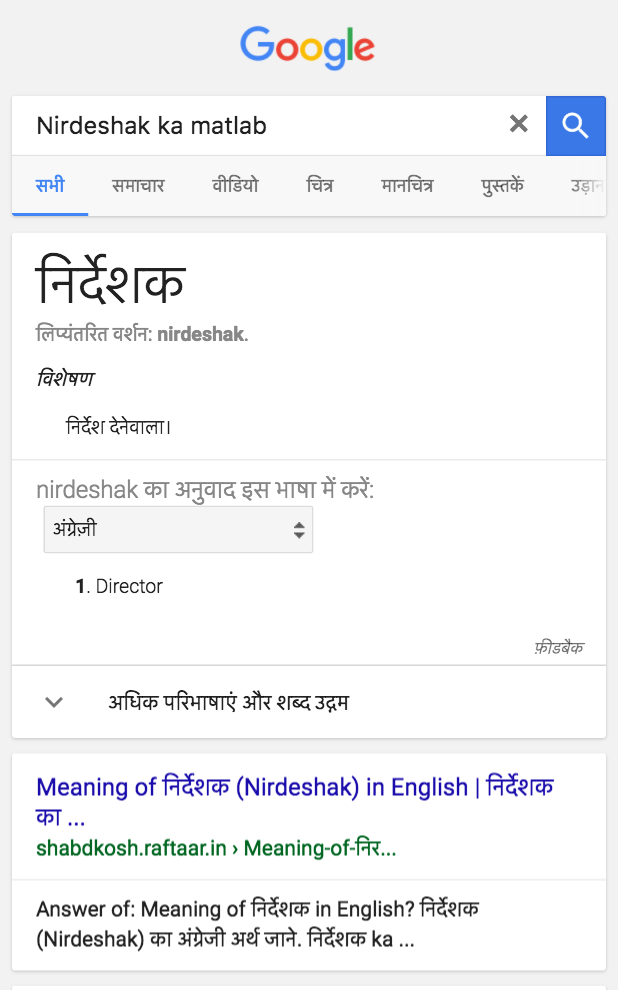
While all these new products and improvements takes us closer to make the web more useful for Indian Language users. We realise that we can’t do this alone, we need India’s internet ecosystem to come together to build apps and more content to make India’s Internet that serve its users need. And one way to effectively get the Internet Industry together to solve for local language users is to really understand the users, understand their needs to shape India’s Internet landscape. We have worked with KPMG India to compile an industry report titled “Indian Languages - Defining India’s Internet” - which provides rich insights on what we need to do together as an Industry to bring the Internet alive for every Indian.
Source: *Indian Languages - Defining India’s Internet” Report
Posted By Barak Turovsky, Group Product Manager, Google Translate
